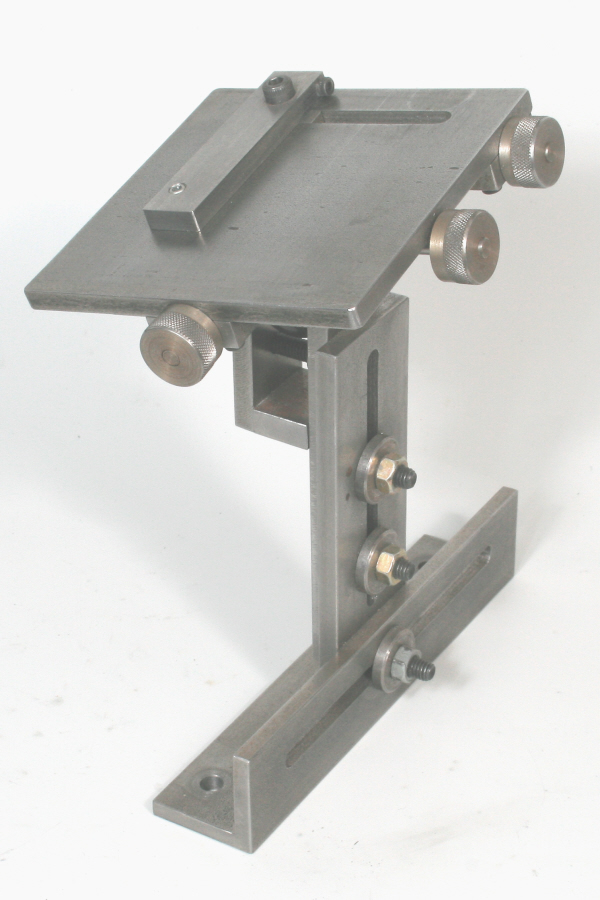joco-nz
Well-Known Member
- Joined
- Feb 21, 2016
- Messages
- 568
- Reaction score
- 209
Next little project that should result in a nice usable tool and progress general machining experience.
So the game plan is take these blanks

and turn them into this simple grinder rest as designed by Harold Hall (http://www.homews.co.uk/page146.html)

As you can see from the blanks I have lots of cleaning up and shaping to do. The massive angle iron will get cut down to a circa 40x40 size with the cut-offs going into the steel collection bin for use at a later date.
I also have yet to cut off the round bar blanks but will get that done once I get some progress on rectangular parts.
Anyway, hope this little build and the resulting tool will be of interest to some people. The plans are in Harold's book "Tool and Cutter Sharpening" which is #38 of the "Workshop Practices Series" if you are interested in dimensions etc.
Cheers,
James.
So the game plan is take these blanks

and turn them into this simple grinder rest as designed by Harold Hall (http://www.homews.co.uk/page146.html)

As you can see from the blanks I have lots of cleaning up and shaping to do. The massive angle iron will get cut down to a circa 40x40 size with the cut-offs going into the steel collection bin for use at a later date.
I also have yet to cut off the round bar blanks but will get that done once I get some progress on rectangular parts.
Anyway, hope this little build and the resulting tool will be of interest to some people. The plans are in Harold's book "Tool and Cutter Sharpening" which is #38 of the "Workshop Practices Series" if you are interested in dimensions etc.
Cheers,
James.





































































































